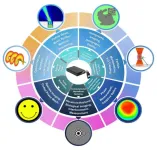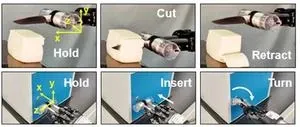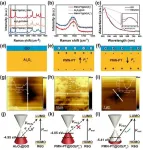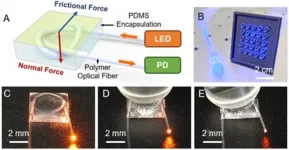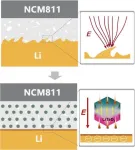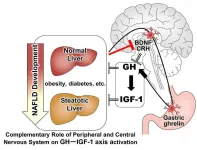(Press-News.org)
A new publication from Opto-Electronic Science; DOI 10.29026/oes.2023.230026 overviews liquid crystal spatial light modulators devices and applications.
Technology to control and harness light has existed for centuries, often as static solutions that must be custom-designed. It is only in the past couple of decades that the digital era of micro-electronics and computing has seen fast rewritable technology meant for displays find its way into the mainstream of optics. In this review, the authors showcase the recent advances in replacing the traditional static optical toolkit with a modern digital toolkit for “light on demand”. The result has been the introduction of digitally controlled light to nearly all major optical laboratories worldwide, opening new paths for the creation, control, detection, and harnessing of exotic forms of structured light. The advanced toolkit promises novel applications from classical to quantum, ushering in a new chapter in on-demand structured light.
The authors of this article reviewed recent progress in using a modern digital toolkit for on-demand forms of sculptured light, offering new insights and perspectives on this nascent topic. The core technology that has advanced this field is the liquid crystal spatial light modulator (SLM), allowing high resolution tailoring of light in amplitude, phase, polarisation, or even more exotic degrees of freedom such as path, orbital angular momentum, and even spatiotemporal control. These simple yet highly effective devices are made up of millions of pixels that can be modulated in phase, for spatial control of light in an in-principle lossless manner. In this review, the authors show how such SLMs can be exploited for a myriad of tasks, from creating all forms of structured light to fast and efficient detectors. They have fueled advances in optical communication, microscopy, imaging and have even become indispensable in modern quantum optics laboratories. It has brought the highly technical and difficult field of diffractive optics and digital holography very much into the mainstream, for anyone to access with relatively cheap solutions. For instance, diffractive optical elements as computer generated holograms could finally be exploited for what they are: just “pictures” to be displayed. SLMs have made this giant leap possible, overcoming the cost and complexity of prior solutions. Most importantly, the “pictures” are rewritable, for on-demand real-time solutions for real-world applications. For instance, holographic optical tweezers allow light-matter interactions to be controlled with just a change to a picture (computer generated hologram), refreshing in real-time for trapping, tweezing and manipulating objects in 3D. This has seen direct application in physics, chemistry, medicine and biology, diverse fields of impact.
The authors unpack the mechanics of how SLMs work, provide novel insights and perspectives based on their long track record in the topic, revealing how this new field is rapidly accelerating along with the nascent topic of structured light. They suggest what the future may hold when present challenges are transformed into exciting applications.
# # # # # #
Prof. Liangcai Cao heads the State Key Laboratory of Precision Measurement Technology and Instruments at the Department of Precision Instruments, Tsinghua University (China). He is an internationally leading figure in digital holography and SLMs. Prof. Forbes heads the Structured Light Laboratory at the University of the Witwatersrand (South Africa), which has pioneered the field of structured light, particularly with SLMs. The team has pioneered the topic of this review, specifically the all-digital control of light.
# # # # # #
Opto-Electronic Science (OES) is a peer-reviewed, open access, interdisciplinary and international journal published by The Institute of Optics and Electronics, Chinese Academy of Sciences as a sister journal of Opto-Electronic Advances (OEA, IF=9.682). OES is dedicated to providing a professional platform to promote academic exchange and accelerate innovation. OES publishes articles, reviews, and letters of the fundamental breakthroughs in basic science of optics and optoelectronics.
# # # # # #
More information: https://www.oejournal.org/oes
Editorial Board: https://www.oejournal.org/oes/editorialboard/list
OES is available on OE journals (https://www.oejournal.org/oes/archive)
Submission of OES may be made using ScholarOne (https://mc03.manuscriptcentral.com/oes)
CN 51-1800/O4
ISSN 2097-0382
Contact Us: oes@ioe.ac.cn
Twitter: @OptoElectronAdv (https://twitter.com/OptoElectronAdv?lang=en)
WeChat: OE_Journal
# # # # # #
Yang YQ, Forbes A, Cao LC. A review of liquid crystal spatial light modulators: devices and applications. Opto-Electron Sci 2, 230026 (2023). doi: 10.29026/oes.2023.230026
END
A new publication from Opto-Electronic Advances, 10.29026/oea.2023.230094 discusses Ferroelectric modulation of the Fermi level of graphene oxide to enhance SERS response.
Surface-enhanced Raman scattering (SERS) is a powerful fingerprint analysis and detection technique that plays an important role in the fields of food safety, environmental protection, bio-imaging and hazardous substance identification. Electromagnetic enhancement (EM) and chemical enhancement (CM) are the two recognized mechanisms of action for amplifying Raman signals. EM originates from the localized surface plasmonic resonance effect of noble metal nanostructures ...
A new publication from Opto-Electronic Advances, 10.29026/oea.2023.230076 discusses knot-inspired optical sensors for slip detection and friction measurement in dexterous robotic manipulation.
Hands possess an awe-inspiring ability to perceive friction forces with remarkable accuracy, all thanks to the mechanical receptors nestled within skin. This natural gift allows objects to be handled deftly and tools to be wielded effortlessly, infusing daily life with a delightful flexibility. But what if this tactile prowess could be unlocked in robots?
Imagine a world where robots possess the uncanny ability to detect and understand friction and slip, just ...
Lithium-ion batteries powered the device on which these words appear. From phones and laptops to electric vehicles, lithium-ion batteries are critical to the technology of the modern world — but they can also explode. Comprising negatively and positively charged electrodes and an electrolyte to transport ions across the divide, lithium-ion batteries are only as good as the limitations of their components. Liquid electrolytes are potentially volatile at high temperatures, and their efficiency can be limited by nonuniformity and instabilities in the other components.
Researchers are working toward developing safer, ...
November 3, 2023 -- The American Federation for Aging Research (AFAR), a national non-profit whose mission is to support and advance healthy aging through biomedical research, will host its annual Scientific Awards of Distinction lectures and ceremony on Friday, November 10 from 6:30pm-9:00pm ET in conjunction with the Annual Scientific Meeting of the Gerontological Society of America (GSA) held in Tampa, Florida. In addition to an awards presentation and reception, the honorees will present lectures highlighting their research.
Rafael de Cabo, PhD, will receive the 2023 Irving S. Wright ...
MELVILLE, N.Y., November 3, 2023 – An examination of the impact of image size on measurements from magnetic force microscopy has won the Advances in Magnetism Award, sponsored by AIP Advances, published by AIP Publishing.
The paper, “Finite image size effects on the characterization of magnetic domain patterns via magnetic force microscopy,” was selected as the winner from nearly 200 papers submitted as part of the 2022 Magnetism and Magnetic Materials conference. Michael Vaka, now a data engineer at Zontal, was awarded a cash prize and a travel stipend to next year’s ...
The annual meeting for the American Physical Society’s (APS) Division of Fluid Dynamics will begin in two weeks with presentations on new research in aerodynamics, turbulence, wind and water power, bubbles, culinary fluid dynamics, medicine, and more. The conference will be held in person at the Walter E. Washington Convention Center in Washington, DC, Nov. 19-21.
There are no press conferences planned for this year’s program. However, a tip sheet highlighting newsworthy presentations is now available in the meeting’s press kit. Registered journalists ...
The sky is no longer the limit — but taking flight is dangerous. In leaving the Earth’s surface, we lose many of the cues we need to orient ourselves, and that spatial disorientation can be deadly. Astronauts normally need intensive training to protect against it. But scientists have now found that wearable devices which vibrate to give orientation cues may boost the efficacy of this training significantly, making spaceflight slightly safer.
“Long duration spaceflight will cause many physiological and psychological stressors which will make astronauts very susceptible to spatial disorientation,” ...
Niigata, Japan – The research group of Professor Kamimura in Niigata University have demonstrated the complementary role of peripheral and central nervous system on GH–IGF-1axis activation to prevent MASLD progression. IGF-1 ameliorates fatty infiltration in the liver. Its release is controlled by GH and GH activation is managed by peripheral or central nervous system. However, the role of this axis in MASLD developmental phase has not been well identified. Our study demonstrated that the GH–IGF-1 axis is significant in inhibiting the progression of MASLD. In addition to the peripheral autonomic ...
Researchers have reached an agreement on how best to measure the severity and impact of Long COVID by identifying a “Core Outcome Measure Set” (COMS).
The research, published in Lancet Respiratory Medicine is co-led by the Institute of Psychiatry, Psychology & Neuroscience (IoPPN) at King’s College London and in collaboration with the World Health Organisation (WHO).
COMS are designed to help researchers and clinicians measure symptoms and impacts of disorders such as Long COVID in the same way, which optimises how data can be compared and summarised. Researchers say this will accelerate the understanding of, and the development ...
A new Cochrane review has found that insulin can be kept at room temperature for months without losing potency, offering hope to people living with diabetes in regions with limited access to healthcare or stable powered refrigeration. This affects millions of people living in low- and middle-income countries, particularly in rural areas, as well as people whose lives have been disrupted by conflict or natural disasters.
Human insulin is a hormone produced by the body that helps turn food into energy and controls blood sugar levels. People with diabetes cannot make enough insulin and those with type 1 diabetes have to inject insulin several times a day, typically before every meal. ...
